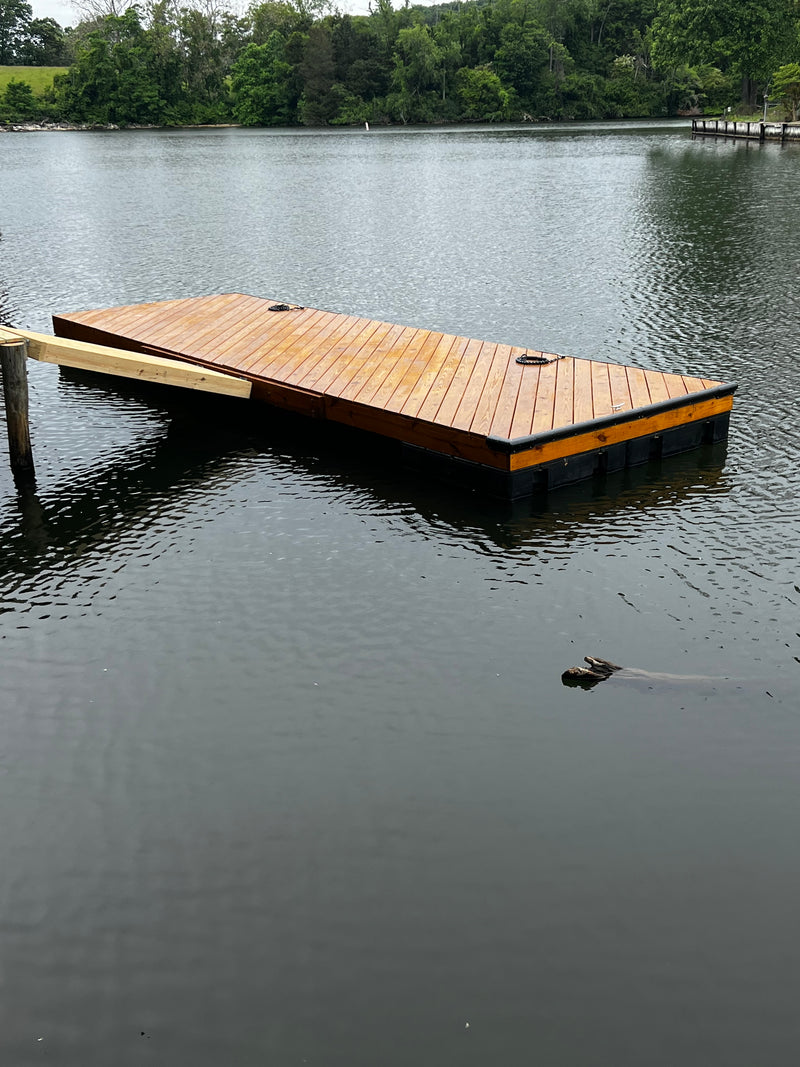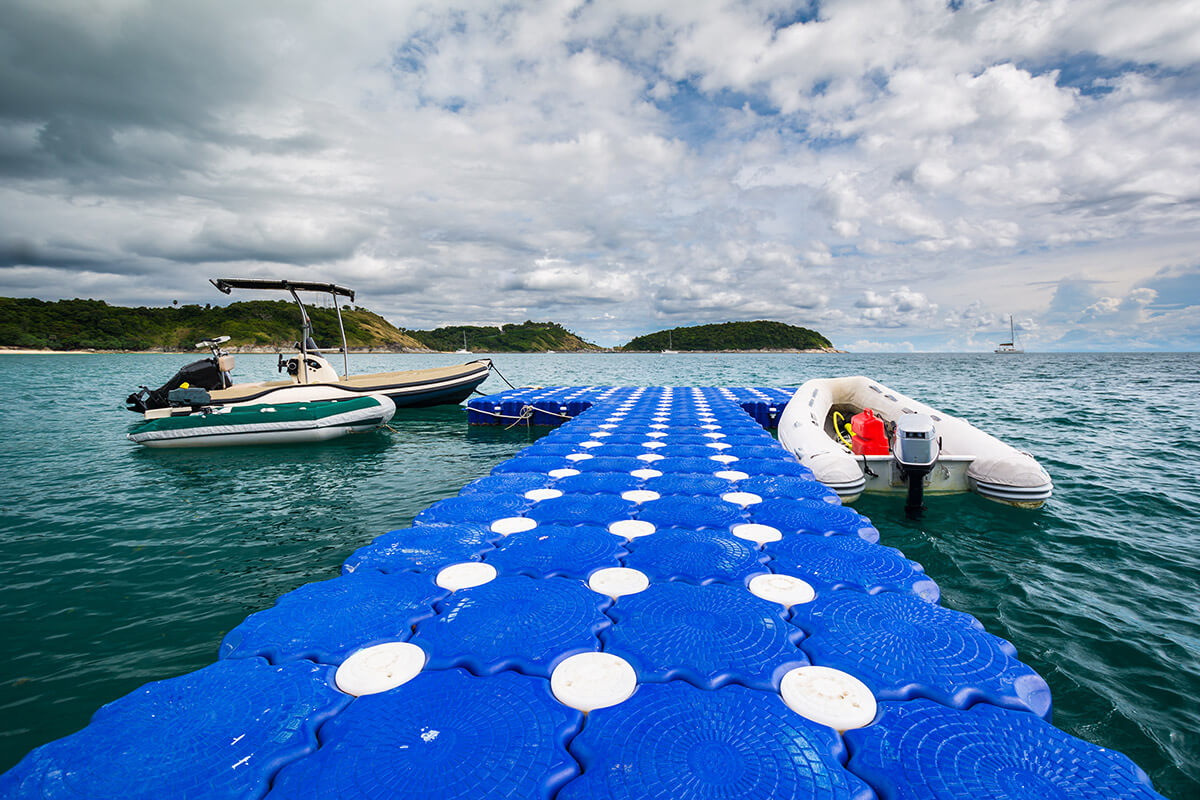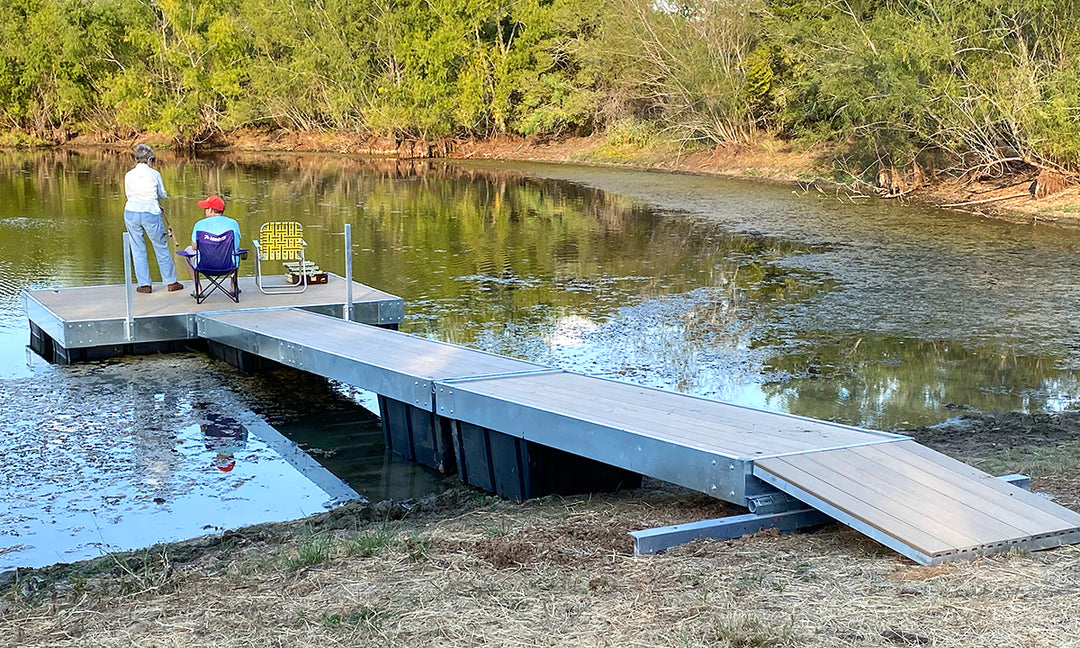Upgrade Your Beachfront With Long Lasting Floating Docks
Upgrading your waterside with durable floating docks can considerably enhance both capability and aesthetics, providing a flexible service for various water activities. With a range of materials available, including low-maintenance choices and typical timber, selecting the appropriate dock can enhance your personal design and meet sensible requirements.
Advantages of Floating Docks
Floating docks deal a plethora of advantages that improve their charm for various maritime applications. Among the main advantages is their flexibility to changing water levels - floating docks. Unlike typical fixed docks, floating docks increase and autumn with the trend, guaranteeing consistent ease of access for boats and watercraft no matter ecological problems. This feature considerably lowers the risk of damages to vessels, as they remain securely tied also during changes in water deepness.
In addition, floating docks are less complicated to transfer and install, giving versatility for seasonal or temporary use. Their modular style enables for personalization to fit details requirements, whether for private marinas, domestic watersides, or commercial applications.
Furthermore, floating docks create very little disruption to the marine setting, preserving regional ecological communities and reducing the chance of erosion. They also supply improved safety and security and stability for users, as their buoyant nature provides an extra flexible surface than rigid structures.
Moreover, floating docks can promote a diverse series of activities, such as fishing, swimming, and entertainment boating, making them a valuable asset for beachfront development. Their adaptability and practicality make floating docks a favored selection for a range of naval tasks.
Choosing the Right Materials
Selecting appropriate products for floating docks is vital to their longevity, efficiency, and overall performance. When selecting products, think about variables such as ecological exposure, upkeep needs, and architectural honesty. Typical materials include wood, plastic, aluminum, and composite alternatives, each offering distinctive benefits and downsides.
Timber, while aesthetically pleasing, needs regular maintenance to prevent rot and decay. Pressure-treated timber can improve resilience, however it may still yield to water damage gradually. Plastic floats, commonly made from high-density polyethylene, are immune to deterioration and need marginal upkeep, making them an eye-catching choice for low-maintenance applications.
Aluminum is one more viable choice, known for its toughness and lightweight properties. It is resistant to rust and can stand up to extreme climate condition, although it might be more pricey than various other materials. Composite products integrate the ideal qualities of timber and plastic, supplying a low-maintenance and durable alternative that resembles the appearance of wood without the associated drawbacks.
Inevitably, the selection of product must line up with the intended usage, environmental factors to consider, and budget plan restraints, guaranteeing a sturdy and practical floating dock that fulfills your particular requirements.
Setup Refine Introduction
The successful installment of a floating dock relies upon careful preparation and implementation, ensuring that it operates properly in its intended atmosphere. The primary step involves analyzing site problems, consisting of water depth, shoreline functions, and prevailing climate patterns, this hyperlink which will certainly inform the dock design and anchoring system.
Adhering to the site evaluation, the following stage is to prepare the floating dock parts. This consists of assembling the structure, securing floats, and connecting any necessary equipment. It is critical to ensure that all links are water-resistant and robust to withstand aquatic conditions.
When the dock is set up, the installation process begins with positioning the dock in the water. This can include a crane or other training tools, particularly for larger structures. Proper positioning is vital for capability and safety.

Maintenance Tips for Longevity
Normal maintenance is vital for guaranteeing the long life and optimal performance of a floating dock. To achieve this, start with routine assessments a minimum of two times a year, focusing on the integrity of the dock's framework, including the go to these guys flotation protection devices and connecting equipment. Try to find signs of deterioration, damages, or wear, and attend to any type of problems without delay to stop additional wear and tear.
Cleansing is another essential element of upkeep. Remove debris, algae, and barnacles from the dock's surface area to avoid slippery problems and preserve aesthetic appeal. Make use of a light detergent and a soft brush to prevent harming the dock's products.
Furthermore, guarantee that the dock is effectively secured and secured to endure seasonal modifications in water degrees and climate condition. Examine the anchoring system for security and make modifications as needed.
Enhancing Your Outdoor Visual
To create a visually appealing outside room, integrating a floating dock can considerably boost the overall visual of your waterfront residential property. Floating docks are not just useful but can likewise offer as a striking prime focus that enhances the natural environments - floating dock company. Available in different products and designs, these docks can be tailored to match your property's architectural style and landscape
The enhancement of attractive aspects, such as incorporated lights or trendy railings, even more elevates the dock's aesthetic appeal. Take into consideration using natural timber coatings, which mix perfectly with the atmosphere, or deciding for modern products like light weight aluminum or composite decking that use a streamlined, contemporary look.
Tactically positioning planters or seating areas on or around the dock can create welcoming rooms that urge leisure and satisfaction of waterside sights. Furthermore, incorporating shades and appearances that harmonize with your landscape will create a cohesive aesthetic throughout your exterior area.

Verdict

Upgrading your beachfront with long lasting floating docks can significantly enhance both functionality and visual appeals, supplying a flexible solution for various water tasks. Unlike traditional fixed docks, floating docks increase and autumn with the trend, guaranteeing constant accessibility for boats and watercraft no matter of ecological conditions.Picking proper materials for floating docks is vital to their long life, performance, and total efficiency.As soon as the dock is set up, the installation procedure starts with placing the dock in the water.In summary, floating docks offer countless benefits, consisting of versatility to water level adjustments and a variety of product options.